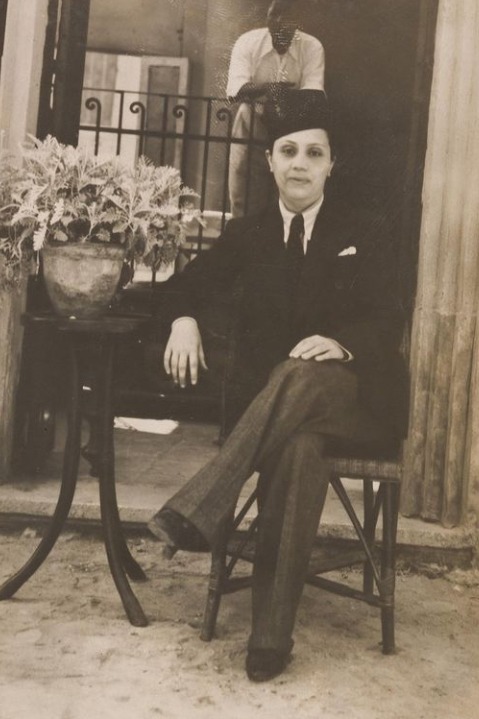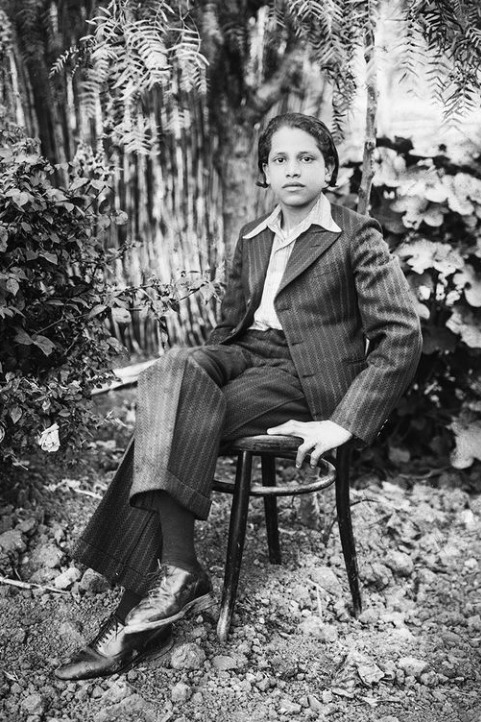As I Am Reading An Aggregation Notebook About Fairytales, I Am Reminded Of Another Reason For Why There
As I am reading an aggregation notebook about fairytales, I am reminded of another reason for why there is this change from “folklorist” to “literary” studies of fairytales recently.
As you might know, the “folkloric” studies of fairytales led to typification, classification, catalogues - the famous Aarne-Thompson classification. We identified the “families” of fairytales, the common points they shared, the ingredients of the recipes, the pieces of the puzzle placed together ; we’ve got lists of archetypal characters and the typical scenarios and routines. And don’t get me wrong, this is really good and cool - through this we were able to identify the “untold rules” of fairytales, and the unofficial canons of the genre, and better highlight the unusual or brilliant variations…
But there is a slight problem with those studies. Their “break-down” method might start out or end as a catalogue, but it passes by a system of “molds”, if I dare say so. Basically, to forge types, to classify, to make lists and divided categories, they enforce the stories into a mold, into general archetypes, into “typical behaviors”… And this is where people see things differently nowadays.
The example I can bring forward is how the folklorist studies usually consider an archetype of the story to be the “aggressor”. You know, the typical fairytale villain. And this folklorist approach will often end up basing their categorization on “What does the aggressor does? How does the hero encounters the aggressor? Is the aggressor killed or robbed?”. But who is the aggressor? Anyone and nobody. In the “aggressor” position, they treat the very same way dragons and evil stepmothers, ogres and wicked fairies, witches and lustful kings, greedy knights and devious dwarves. These are all just “costumes”, for some folklorist, placed on an archetypal “fairytale aggressor”, and these “costumes” are just ornaments that are only a secondary, if not tertiary matter.
But… what the “literary studies” are bringing forth nowadays is the question: “Wait… Maybe it does matter. Maybe who or what the aggressor is does matter. Maybe we shouldn’t treat the same way stories that are about dragons and those about evil witches. Maybe there is a reason why the storyteller prefers to talk about a greedy abusive mother rather than an ogre deep in the woods. And the literary studies precisely ask those questions because - unlike the folklorist studies which mostly see fairytales as ancestral plans and outlines, traditional schemas and structure, cultural frameworks and fabrics, the literary studies try to consider the fairytales more as stories first. Stories told by a certain person, in front of a certain audience, crafted a certain way for a certain time and era.
This is why, while the folklorist studies tend to discard or disregard the “little details” as not so important (because they are searching for the bone structure or “primordial core” of the story), the literary studies rather focus on these details - because it is those details that make the story. The little twists and turns that each storyteller adds to the formula, the specific additions of a man or woman’s own mind and culture. For a folklorist study, it doesn’t matter if the key is made out of gold or bronze - or even if it is a key at all, it might be a magical egg as long as it has to be found by the protagonist to open a magical door. But to the literary study, the implications of changing the key from gold to bronze will be questioned, and having an egg instead of a key will be a BIG deal.
I don’t know if what I said is clear, but I just wanted to point it out. (With such a big topic as this whole literary VS folklorist debate, one needs to pile up the little crumbs over each other until they make a big pile, because that’s literaly centuries of scholarship, studies and popular culture reception at war here)
More Posts from Ro0hafz4 and Others
This is Amal and her family. My children are living under bombardment in the war 😭 Please consider them your children and help them 🙏🙏 Stand by my side to save and protect my children. They haven't gone to school for a year 🙏😢😢 Donate to save my children's lives 🍉 🙏🇵🇸 We live in very difficult and desperate circumstances, and what is worst of all is that the fear that haunts me increases day by day. Help me provide them with basic life needs. @gazavetters is verified, my verified number in the list is (#55)
Please help Amal and her family get food, water and shelter!!

Their campaign has been vetted here at #55 by @gazavetters, $7,760/$30,000 (26%) has been raised (as of 20/11/2024). Please donate if you can and share as much as possible to get Amal and her family to safety!!
Do you have a list or something of your favourite academic/theory books? 🥺
sure! all of them should be available on libgen, so enjoy 🧚🏻♀️ i did focus on cultural histories rather than theory, though, otherwise it would get too long. virtually all of them are published by the academic presses, and well-sourced and peer-reviewed. no pseudoscience in this household, no sirree! (also, none of them have anything to do with my actual field of study. i’m just like that)
— Medieval Ghost Stories: An Anthology of Miracles, Marvels and Prodigies, — Fallen Bodies: Pollution, Sexuality, and Demonology in the Middle Ages, — After Lives: A Guide to Heaven, Hell, and Purgatory, — Darkness: A Cultural History, — Eccentricity and the Cultural Imagination in Nineteenth-Century Paris, — Angels & Angelology in the Middle Ages, — Enchanted Europe: Superstition, Reason, and Religion 1250-1750, — Bedeviled: A Shadow History of Demons in Science, — The Extraordinary and the Everyday in Early Modern England, — Landscapes of Fear, — Strangers, Gods and Monsters: Interpreting Otherness, — The Severed Head: Capital Visions, — Gothicka: Vampire Heroes, Human Gods, and the New Supernatural, — Frauds, Myths, and Mysteries: Science and Pseudoscience in Archaeology, — When the Dead Rise: Narratives of the Revenant, from the Middle Ages to the Present Day, — Mystics and Messiahs: Cults and New Religions in American History, — Religion and Its Monsters, — On Monsters: An Unnatural History of Our Worst Fears, — The Prince of Darkness: Radical Evil and the Power of Good in History, — Visions of the End: Apocalyptic Traditions in the Middle Ages, — Medieval Robots: Mechanism, Magic, Nature, and Art, — Gods and Robots: Myths, Machines, and Ancient Dreams of Technology, — From Gods to God: How the Bible Debunked, Suppressed, Or Changed Ancient Myths and Legends, — A Cabinet of Byzantine Curiosities: Strange Tales and Surprising Facts from History's Most Orthodox Empire, — Women Who Fly: Goddesses, Witches, Mystics, and Other Airborne Females, — The Spectral Arctic: A History of Dreams and Ghosts in Polar Exploration, — Strange Histories: The Trial of the Pig, the Walking Dead, and Other Matters of Fact from the Medieval and Renaissance Worlds, — Discerning Spirits: Divine and Demonic Possession in the Middle Ages, — Grimoires: A History of Magic Books, — Dark Tongues: The Art of Rogues and Riddlers,
etc, etc, etc.


Image ID: An excepert, cut into two screenshots, from "The Archaeology of Caves in Ireland", by Marion Dowd, that reads:
DISAPPEARING UNDERGROUND
The idea that some ritual activities at caves involved people disappearing from view into darkness is powerful. In most cases only one individual or a small se- lect group could have entered caves at any one time. Thus the potentially public nature of early stages of some rituals, such as the entire community walking to a cave entrance, may have been juxtaposed by the secret activities that took place inside the cave involving just a few people. Witnessing this disappearance into darkness, and waiting for individuals to re-emerge, is likely to have been dramatic. The length of time spent inside a cave may have increased the feelings of anticipation, expectancy, anxiety, trepidation, fear or mystery experienced by those outside. People above ground were in the dark too. What was happening down there in the darkness? Who or what would be met in the cave? Why was the trip taking so long? Would s/he return? What would be the outcome?
These were religious and spiritual excursions into darkness that must have transformed those waiting outside but especially the person who had entered the cave. Such journeys may have conferred her/him with greater power, status, reverence or respect if caves were perceived as places of the Otherworld where it was possible to commune with the spirit world. Emerging from darkness and returning to the world of the living may have been seen as akin to a rebirth: emerging with new knowledge or insights, emerging as a new and transformed person.
/End ID

Illustration for Wuthering Heights by Felix Abel Klaer


The Colour of Pomegranates, 1969









Persephone and the Springtime was written by Margaret Hodges with illustrations by Arvis Stewart.
Part 1
-
 ro0hafz4 reblogged this · 6 months ago
ro0hafz4 reblogged this · 6 months ago -
 leluxiboi liked this · 8 months ago
leluxiboi liked this · 8 months ago -
 parasite--girl liked this · 1 year ago
parasite--girl liked this · 1 year ago -
 smilesforsuffering liked this · 2 years ago
smilesforsuffering liked this · 2 years ago -
 adarkrainbow reblogged this · 2 years ago
adarkrainbow reblogged this · 2 years ago













